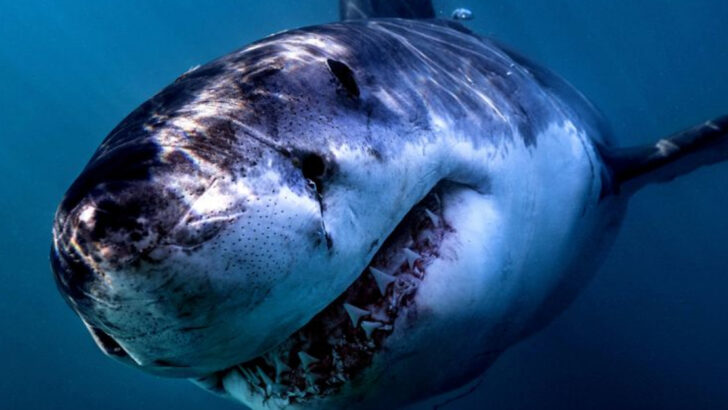The ocean has no shortage of nightmares—but two names rise above the rest.
The Great White.
The Tiger Shark.
One’s a ton of muscle with a mouth full of razors. The other? A striped torpedo that eats everything, from sea turtles to car tires.
They’re both apex predators. Both ancient. Both built to kill.
But who really wears the crown down in the dark?
This isn’t a popularity contest.
It’s a face-off of power, bite force, brains, and raw, ruthless instinct.
Dive in—if you dare.
Let’s see who rules the deep.
Size and Build
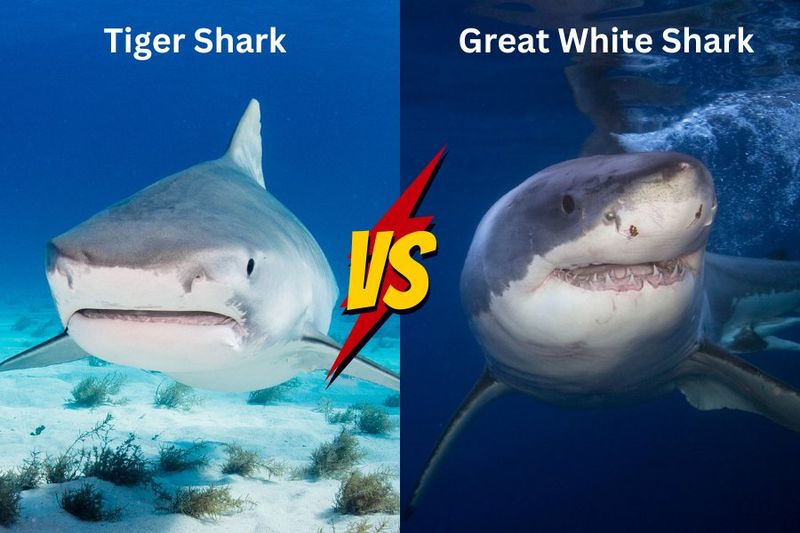
Visibility in the water is often determined by size. The Great White, known for its robust build, typically measures around 15 to 20 feet. Meanwhile, the Tiger Shark, with a sleeker silhouette, can reach similar lengths but is often more slender.
These sharks’ sizes are not just a matter of scale but of adaptation. The Great White’s bulk aids in swift bursts of speed, while the Tiger Shark’s streamlined body is perfect for stealthy navigation through tight spaces.
Such differences are pivotal in their hunting techniques and habitat preferences.
Hunting Techniques

The art of hunting varies immensely between these predators. Great Whites are known for dramatic breaches, propelling themselves out of the water to catch prey unawares.
Contrastingly, Tiger Sharks employ a more methodical approach. They glide silently, often near the ocean floor, ambushing with precision. This difference in hunting style showcases their adaptability.
Where Great Whites rely on surprise, Tiger Sharks depend on patience and stealth. Each method speaks volumes about their evolution as top predators in their respective domains.
Dietary Preferences

What fuels these ocean giants? Great Whites are partial to seals and sea lions, relishing the rich fat content for energy.
Tiger Sharks, however, are the ocean’s garbage cans. Their diets are eclectic, ranging from fish to birds and even license plates! Their varied diet reflects their opportunistic nature.
This dietary distinction highlights their ecological roles. Great Whites are specialists, while Tiger Sharks are adaptable generalists. Understanding these preferences offers insight into their survival strategies amidst oceanic challenges.
Habitat Range

Where do these sharks call home? Great Whites are primarily found in cooler waters, often near coastal regions where seals abound.
Tiger Sharks enjoy warmer climates, roaming from the tropics to temperate zones. Their habitat is vast, reflecting their versatility and adaptability.
Understanding their habitats is crucial. The Great White’s preference for cooler waters contrasts sharply with the Tiger Shark’s tropical inclinations. This geographic distribution plays a key role in their respective hunting and breeding strategies.
Reproductive Strategies
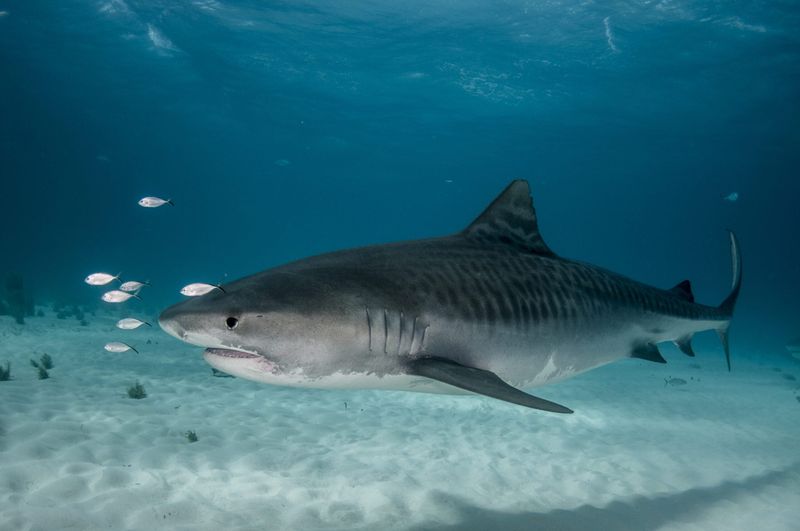
The circle of life is intriguing for these sharks. Great Whites give birth to live young, with a few pups at a time, ensuring focused parental investment.
Tiger Sharks, however, can have large litters, sometimes over 30 pups, highlighting a different survival strategy focused on numbers.
This reproductive divergence is fascinating. Great Whites emphasize quality, nurturing fewer pups, while Tiger Sharks rely on quantity, increasing their odds of species survival. These strategies reflect their unique approaches to ensuring their lineage continues.
Social Behavior

How sociable are these predators? Great Whites are typically solitary, meeting only for mating or prey-rich opportunities.
In contrast, Tiger Sharks can often be found in groups, especially when food is plentiful. This social behavior contrasts sharply.
Their sociability speaks to their adaptability. Great Whites, as lone hunters, rely on stealth and surprise, while Tiger Sharks’ group dynamics can overwhelm prey. Understanding these behaviors provides insight into their evolutionary paths and survival strategies.
Senses and Perception

In the murky depths, keen senses are vital. Great Whites possess acute vision and smell, detecting prey from miles away.
Tiger Sharks boast an extraordinary sense of taste, often using their mouths to investigate unfamiliar objects. Their electroreceptive capabilities also aid in locating prey.
These sensory adaptations are paramount in hunting. Great Whites rely on sight and scent, while Tiger Sharks leverage taste and electric senses. This sensory prowess illustrates their finely-tuned evolutionary developments.
Lifespan and Longevity
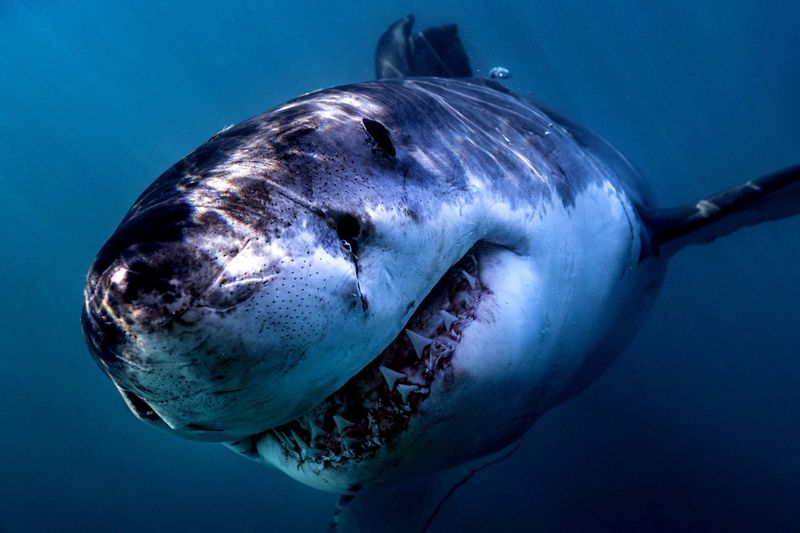
How long do these giants thrive? Great Whites can live up to 70 years, with their maturity reached around 15 years.
Tiger Sharks have a shorter lifespan, usually around 30 to 40 years, but mature faster than their Great White counterparts.
Longevity differences are telling. Great Whites’ extended lifespan allows prolonged dominance and learning, while Tiger Sharks’ quicker maturity enables faster generational turnover. These lifespan traits reveal their distinct ecological niches and evolutionary priorities.
Threats and Conservation

Preserving these apex predators is vital. Great Whites face threats from fishing and habitat loss, despite protection laws.
Tiger Sharks, though less protected, face similar dangers, including bycatch and marine pollution. Conservation efforts vary.
Understanding these threats is crucial for their survival. Both species play essential roles in ocean ecosystems, and their protection ensures marine biodiversity. Conservation strategies must address specific threats, highlighting the need for tailored approaches to preserve these iconic creatures.
Cultural and Historical Significance
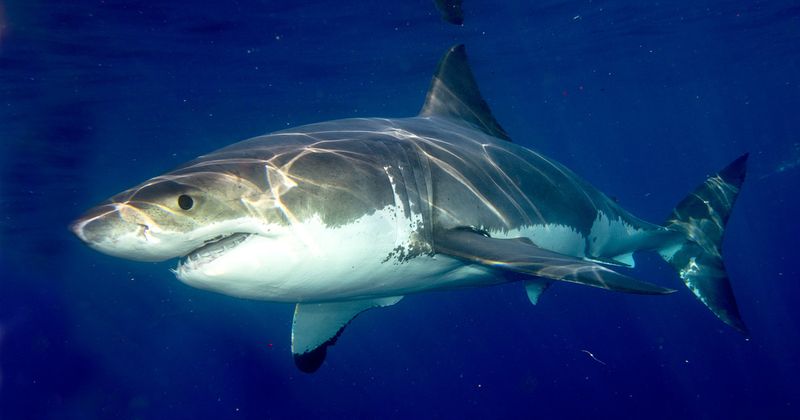
These sharks have captured human imagination. Great Whites, often depicted in films like “Jaws,” are seen as fearsome predators.
Tiger Sharks, with their striped bodies, are part of Hawaiian mythology, symbolizing strength and protection. Their cultural significance varies.
The way societies perceive these sharks influences conservation efforts and public attitudes. Great Whites’ portrayal as menacing contrasts with the Tiger Shark’s symbolic roles. This cultural lens affects their protection and the importance placed on their existence within marine environments.
Ecological Impact
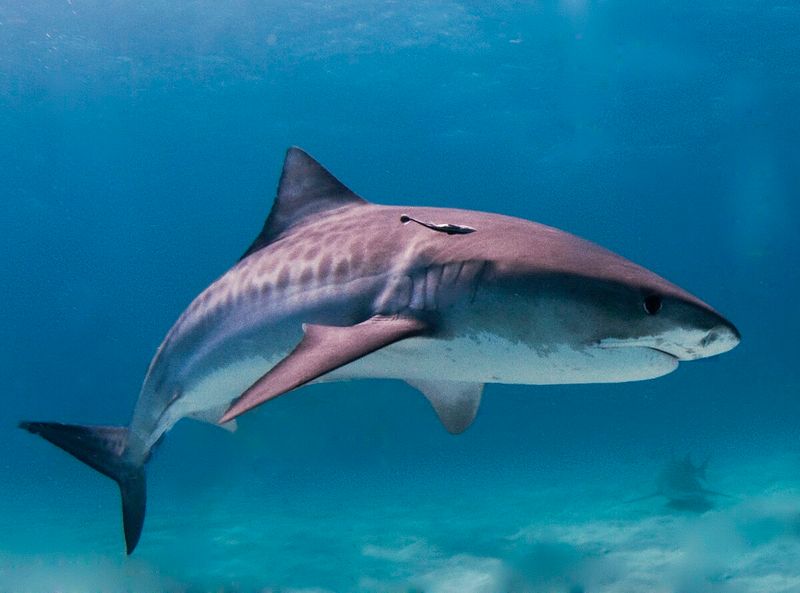
In the marine world, both sharks are keystone species. Great Whites regulate prey populations, ensuring ecological balance.
Tiger Sharks, as opportunistic feeders, help control the abundance of various marine species, maintaining biodiversity.
Their ecological roles are crucial. Great Whites’ selective predation maintains healthy prey populations, while Tiger Sharks’ broader diet prevents overpopulation. These impacts underscore their importance in oceanic ecosystems, reflecting their roles in sustaining marine life and ecological harmony.

